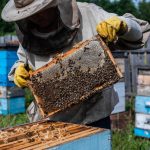Asthma, a chronic respiratory condition, affects millions of people globally. In the United States alone, approximately 25 million people suffer from this ailment, according to the Centers for Disease Control and Prevention. An integral factor that influences the frequency and severity of asthma attacks is the quality of the air we breathe at home. The home environment is a haven for various asthma triggers like dust, mold, smoke, and other allergens. To protect the health and well-being of people living with this condition, creating an asthma-friendly home environment is of paramount importance. This article delves into ways of reducing exposure to triggers, making your home a safer space for asthma sufferers.
Understanding Asthma and Its Triggers
Before we explore ways to control the triggers, understanding the nature of asthma and its relationship with these triggers is crucial. Asthma is a chronic lung condition characterized by inflammation and narrowing of the airways. This leads to shortness of breath, wheezing, coughing, and chest tightness. Asthma may be triggered by a variety of factors commonly present in the home environment.
A lire aussi : What Are the Best Foods for Enhancing Cognitive Function in Students During Exam Periods?
Exposure to certain indoor allergens and irritants can cause or exacerbate asthma symptoms. These triggers include dust mites, pet dander, mold spores, and secondhand smoke. Other factors like chemical irritants in household cleaning products, perfumes, and cosmetics can also provoke asthma attacks. Dealing with these triggers can be challenging, but with the right strategies and commitment, you can create a safer and healthier home environment.
Implementing Effective Dust and Allergen Control Measures
A primary step in creating an asthma-friendly home is controlling the presence of dust and allergens. These tiny particles are often invisible to the naked eye but can trigger intense asthma symptoms when inhaled. A simple yet effective strategy is regular cleaning.
A lire en complément : Can Urban Landscape Design Incorporating Running Trails Improve Population Cardiovascular Health?
For effective dust control, frequent vacuuming is recommended, ideally with a vacuum cleaner equipped with a high-efficiency particulate air (HEPA) filter. These filters effectively capture small particles such as dust mites and pet dander, reducing your exposure. Regularly washing linens, curtains, and other fabrics in hot water can also help control dust mites.
Additionally, consider reducing clutter around your home. Clutter offers a perfect hiding place for dust and allergens, making it harder to maintain a clean environment. Regular decluttering minimizes areas where dust can accumulate, aiding in allergen control.
Tackling Mold and Dampness
Another common indoor asthma trigger is mold, which thrives in damp conditions. Therefore, keeping your home dry and well-ventilated is crucial to prevent mold growth.
Use exhaust fans in bathrooms and kitchens to reduce humidity levels. Also, consider using a dehumidifier in damp areas, such as basements. Regularly check and clean air-conditioning units and humidifiers to prevent mold buildup.
In case of visible mold, it’s necessary to remove it promptly to prevent further spread. Small areas of mold can be cleaned with household products, but for larger infestations, professional help may be required.
Being Mindful of Smoke and Chemical Irritants
Smoke is another potent trigger for asthma attacks. If you or other household members smoke, it’s vital to quit or at least make sure to smoke outside, far from windows and doors. Better yet, establish your home as a smoke-free zone, which will not only benefit people with asthma but also contribute to the overall health of all inhabitants.
Aside from tobacco smoke, also be cautious of smoke from fireplaces and wood-burning stoves. If you must use these, ensure they are well-vented to minimize indoor smoke exposure.
Household chemicals in cleaning products, air fresheners, and personal care products can also irritate the airways and trigger asthma symptoms. Opt for fragrance-free or natural products whenever possible.
Prioritising Indoor Air Quality
A crucial yet often overlooked aspect of an asthma-friendly home is the quality of indoor air. Indoor air can be up to five times more polluted than outdoor air, according to the Environmental Protection Agency. Therefore, maintaining good indoor air quality is vital.
Ensure good ventilation by letting fresh air into your home whenever weather and outdoor air quality permit. Use exhaust fans in your kitchen and bathroom. Regularly replace filters in your heating, ventilation, and air conditioning (HVAC) system. Consider investing in an air purifier with a HEPA filter, especially in the bedroom of the person with asthma.
Remember, creating an asthma-friendly home may require some effort, but with these steps, you can significantly reduce the risk and severity of asthma attacks, making your home a more comfortable and safe space for everyone.
Embracing Asthma-Friendly Practices and Products
Altering your routine and the products you use can significantly diminish the presence of asthma triggers at home. It’s a simple yet highly effective method that has been backed by numerous studies on google scholar and pubmed google.
One such practice includes swapping your standard cleaning products for those that are less likely to trigger asthma. Most cleaning products contain harsh chemicals that can irritate the respiratory system and induce asthma symptoms. By opting for more natural cleaning solutions, you can dramatically reduce the possibility of an asthma attack occurring. Look for fragrance-free or plant-based products, which are less likely to exacerbate asthma symptoms.
Similarly, reconsider the personal care products you use. Like cleaning products, these often contain strong fragrances and chemicals that can trigger asthma. Opt for fragrance-free or hypoallergenic alternatives. This includes items like deodorant, shampoo, lotions, and cosmetics.
The clothes you wear and the fabric you use at home can also harbor common asthma triggers like dust mites and pet dander. Wash clothes, bedding, and fabric-covered furniture regularly in hot water to eliminate these triggers.
Additionally, having indoor plants can improve indoor air quality by absorbing pollutants and emitting oxygen. However, be sure to select plants that aren’t likely to provoke allergies. Spider plants, snake plants, and areca palms are all excellent options that have been shown in google scholar and pubmed google studies to improve indoor air quality.
Conclusion: Cultivating an Asthma-friendly Home
Creating an asthma-friendly home environment is a practical and significant step towards managing this chronic respiratory condition. By understanding and addressing the triggers that can exacerbate asthma symptoms, you can effectively reduce exposure to these elements and minimize the frequency and severity of asthma attacks.
Remember, it’s not just about removing triggers. It’s also about cultivating a space that promotes good health, comfort, and well-being. This includes maintaining good indoor air quality, choosing asthma-friendly products, and following habits that reduce the presence of triggers in the home.
Ultimately, the goal is to create a safe and healthy living environment for people with asthma and everyone else in the household. It may require effort, commitment, and some changes, but the benefits – a significant reduction in asthma symptoms and a healthier home – are well worth it.
As highlighted in this free article, these guidelines, combined with regular medical advice and treatment, can significantly improve the quality of life for individuals with asthma. You can also refer to pmc free articles and article pubmed resources for additional in-depth research on creating an asthma-friendly environment.
By applying these recommendations, you’re not only making your home a more comfortable and safe space, but you’re also contributing positively to the broader fight against global air pollution. With each step you take, you’re part of the solution in improving the overall health and well-being of millions of people across the globe suffering from asthma.
In conclusion, remember the words of Benjamin Franklin, "An ounce of prevention is worth a pound of cure." In the context of asthma, prevention truly is the best medicine. So, let’s start at home by reducing potential asthma triggers and create a healthier environment for everyone.
















